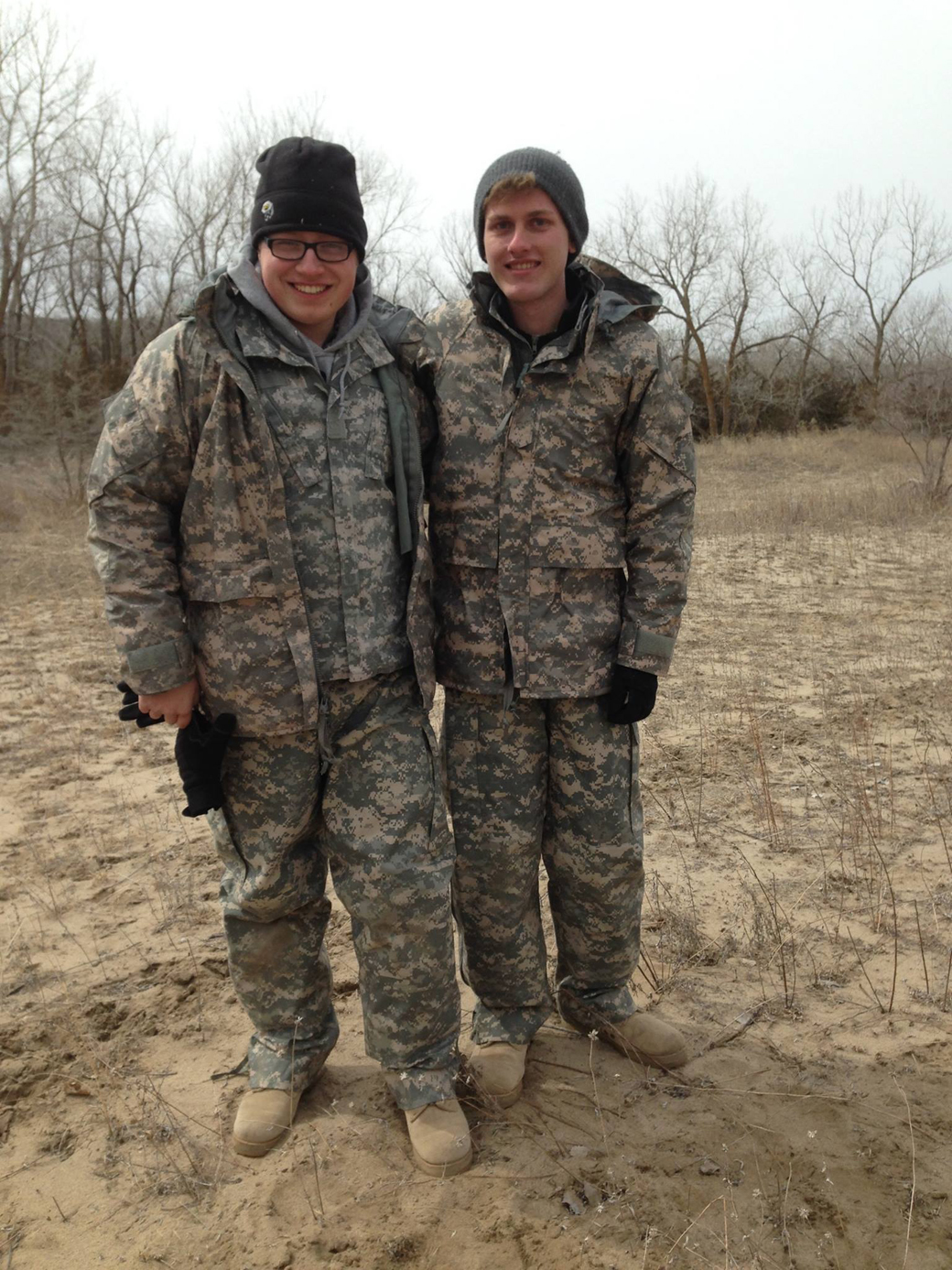
ROTC training exercise gives glimpse at possible future
It’s 5:30 a.m. on a Saturday. The sun has yet to rise, so instead of trying to assess the surroundings outside, I focus my attention to the activity taking place inside the 15-passenger van packed full of students involved with the Reserved Officers’ Training Course at the University of South Dakota.
From the back of the van, someone calls out “We’ve got to make it happen today!” Shortly thereafter, the caravan of ROTC vehicles arrive at our destination – a training area near Elk Point, where a Simulated Training Exercises (STX) program will be carried out for the next 13 hours.
Cadets begin piling out of vans, running around in organized frenzy completing tasks that seem foreign to me. There are M-16s being distributed, ruck sacks are hoisted atop cadet’s backs and before long two platoons have taken shape.
As one of four embedded journalists taking part in the STX program, I have been assigned to the first squad of the first platoon. At this point I have no idea what the coming hours hold, but as Cadet Captain Matt Martinez would say to me moments before the first of six objectives began, “It’s going to be quite a day.”
As various bits of information is relayed to everyone, the platoon is informed they will have an embedded journalist attached to them for a majority of their missions.
With a stern voice, the sergeant sternly says, “Take care of the media. Protect them.” I begin to ponder what those comments could possibly foreshadow when from a distance, the command to move out is called, and my platoon begins its trek through the thick brush.
The cold is intense, but the rising sign and constant marching helps keep me warm. Again, the organization of my squad is a mirror reflection of the day’s earlier events when we arrived at our destination. A navigator leads the squad in the right direction, while others fan out from behind, scoping the landscape for any enemies lurking behind trees or in the brush.
The military boots I’m wearing are a tad too big, so it’s more difficult to get good footing than it should be. Just when I’m getting used to the squad’s pace and I’m fairly acclimated to the surrounding environment, the navigator of our squad yells out something that sounds like “SAPA” and “ambush.” (SAPA is the enemy for the day’s exercises).
At this point I have no idea what’s going on, but before I know it I’m being told to run and stay close. I’m running blindly with no real sense of direction trying to stay near the Captain, branches are flying everywhere scratching my face and the sound of gunfire (not to worry, everyone was using blanks) is coming from all directions.
This was my first taste of what it’s truly like to be an embedded journalist, and it wouldn’t be my last that day. On more than one occasion, I would get to experience similar scenarios an embedded journalist might encounter on a daily basis.
Similar to everyone else who dreams about their future careers, I’ve always wondered what it would be like to be an embedded journalist in the U.S. military. It’s fair to say I had my set of ideas about what the position entails, but truth be told, I really knew very little about this job.
What better way to gauge your professional interests than to experience them first-hand? Put yourself out there and apply for an internship. At the very least, set up a tour with someone goes to work every day in the profession that most interests you.
Or in my case, sign up to be an embedded journalist in the STX program and spend a day crawling through the mud with gunfire raining above your head while reporting on what is happening in the war to keep the general public informed.
Photo: Volante staff members Michael Geheren and Trent Opstedahl (right) participated in the Reserved Officers’ Training Course as embedded journalists. (Courtesy Photo)

